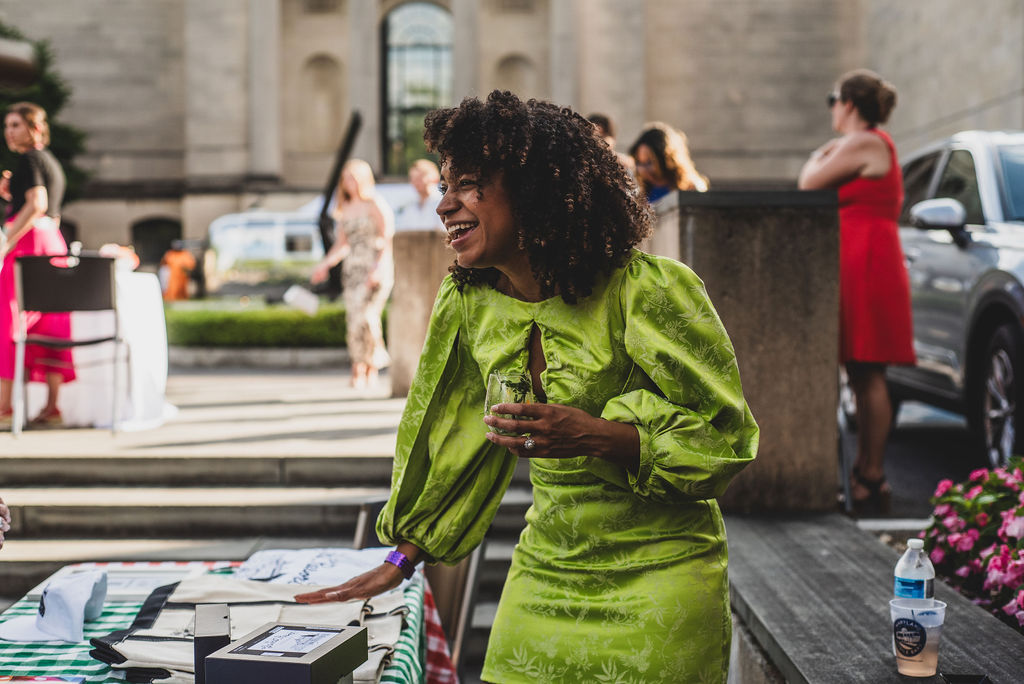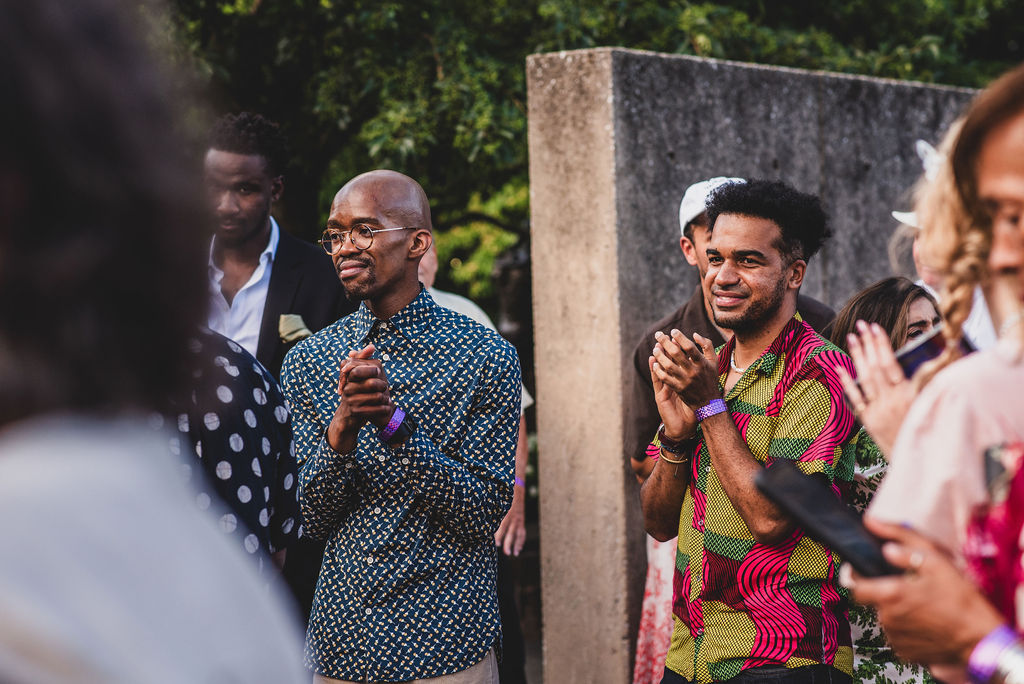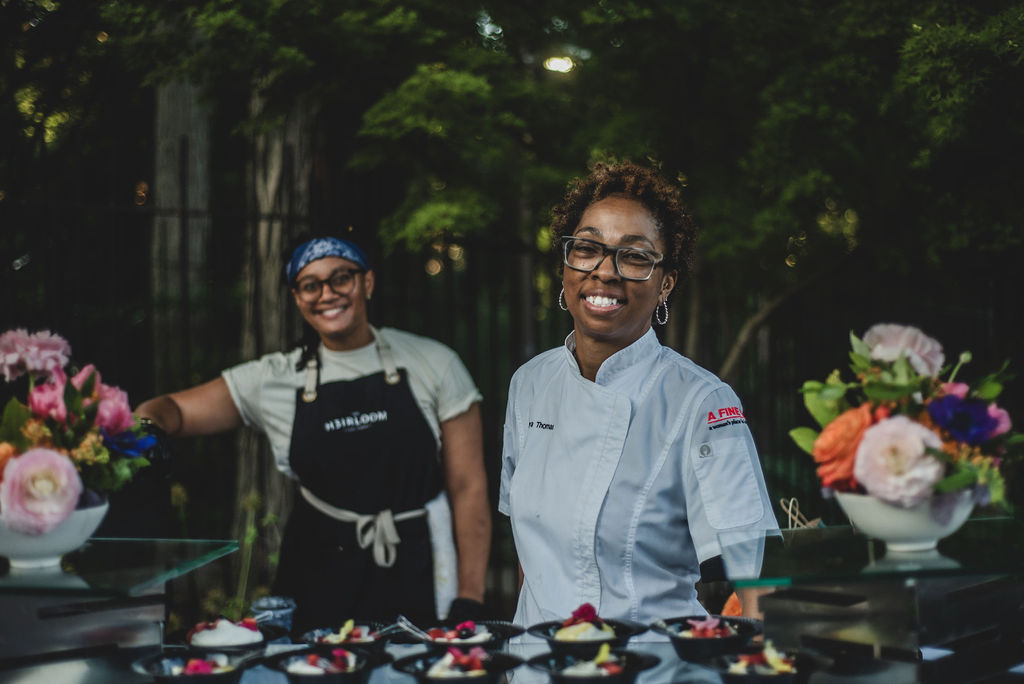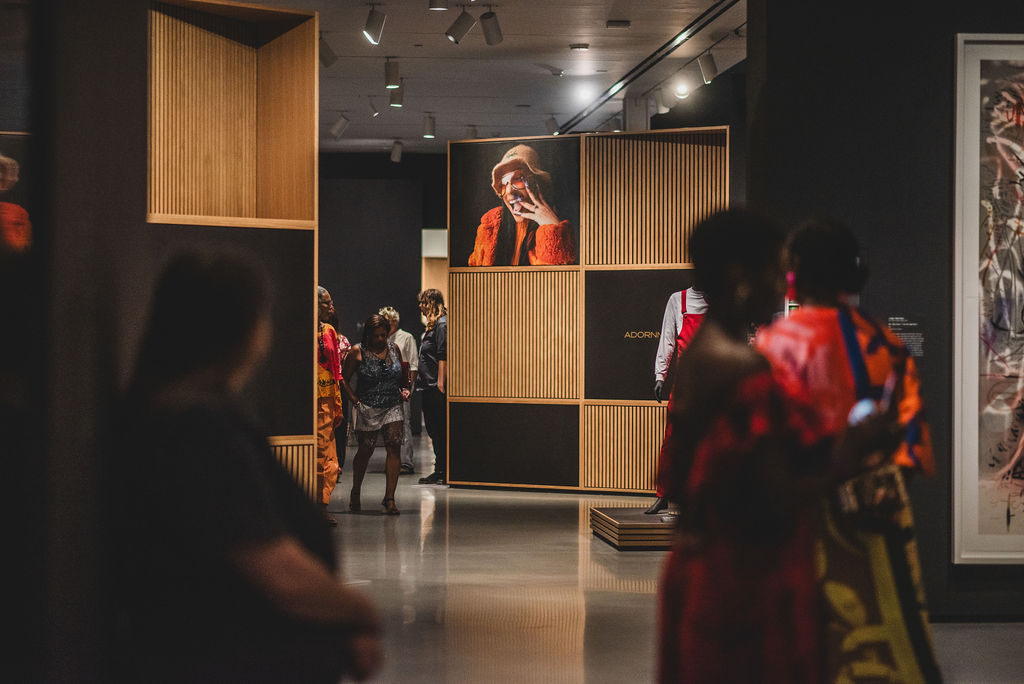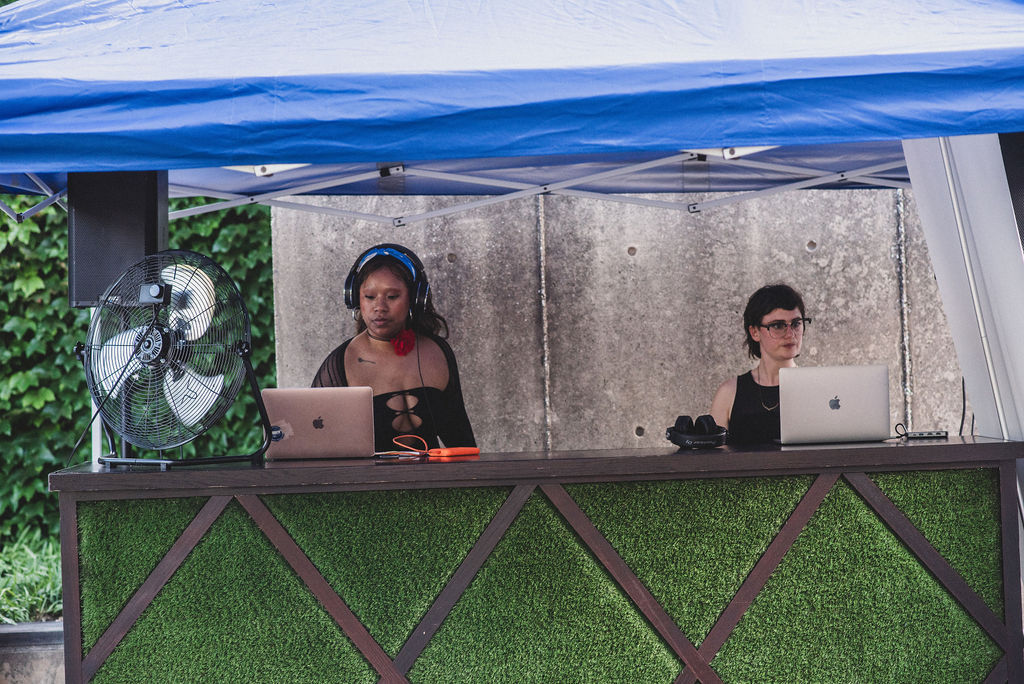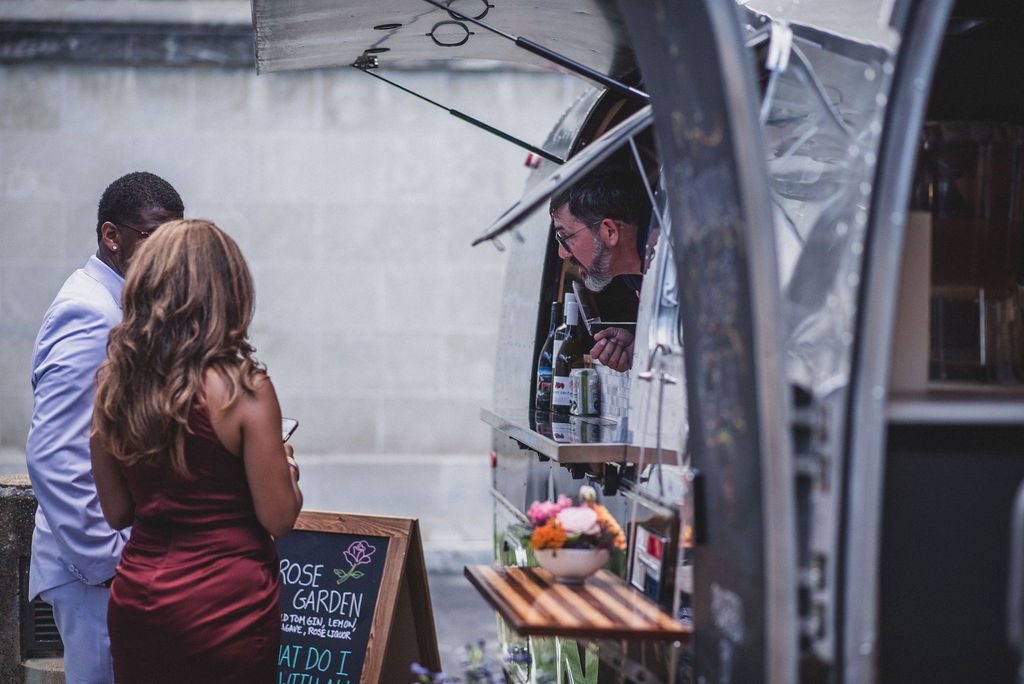For those of us who love a balmy summer evening, the Baltimore Museum of Art’s Midsummer Night’s Gala was inspired by this locally acquired taste. Luckily for the museum and guests, on Sunday June 25, the rain held off and this festive garden party celebrating newly appointed Dorothy Wagner Wallis Director Asma Naeem offered a moment of spirited congregation surrounded by outdoor sculpture and teeming green foliage.
In characteristic Baltimore style, guests showed up with serious drip, and were rewarded with hospitality that included cocktails mixed by Maryland Mobile Bar, an artful spread from the H3irloom Food Group, and music from Amy Reid and Pangelica. Guests were encouraged to walk through the museum as well, specifically to see The Culture, which ends on July 16, 2023.
The fete served as the first ticketed benefit for the museum since assuming new directorship and board chair, James D. Thornton, and included a silent auction to benefit The Last Resort Artist Retreat (TLRAR), a new, nearby Baltimore-based residency founded by Derrick Adams.
Works for sale by silent auction featured artists with strong ties to the Baltimore region including Adams, Jabari Jefferson, Jamaal Peterman, Murjoni Merriweather, McKinley Wallace III, and Kyle Yearwood, with the majority of works originally exhibited in Reframing Futures II at Goucher College’s Silber Gallery from April 27 – June 3, an exhibit co-curated by TLRAR’s Thomas James and Alex Ebstein. The auction featured a digital catalog and purchase via phone app, where a text would inform you when you were no longer the highest bidder.
While a number of Baltimore-based arts nonprofits regularly feature contemporary art auctions, this is the only one that I can recall the BMA hosting in the past two decades, even though all proceeds from the auction went to TLRAR. From my vantage point, this change, as well as hosting an affordably-priced fundraising party with tickets for sale to the general public, is a signal that Naeem’s leadership model is diverging from the previous one.
Raising funds is a primary responsibility for any museum director, and Baltimore is a challenging environment for cultural nonprofits of all sizes, so making this process more inclusive and transparent is a deliberate choice. When a museum receives a high percentage of their annual budget from a wide variety of small and independent sources, rather than a few wealthy donors, it’s in a healthy space to make changes that are progressive, equitable, and relevant. Not only does this make an institution more accountable to the general public, it creates the opportunity to share space and resources with smaller organizations like TLRAR.
According to the BMA, the event funding from ticket sales and sponsorships will be used to provide essential support to “create a museum that welcomes our community and uplifts the work of artists.” For me, the simplicity of this statement speaks volumes and sets the bar high for this new administration without resorting to hyperbole or ambiguity.
Naeem addressed the crowd and described her vision for the museum, but mostly she focused on the community of artists present. She invited them to join her in front of the crowd for a round of applause and thanked them for their bravery and commitment. From my perspective, a museum willing to share the stage and lend credibility to Baltimore-affiliated artists is one that is worthy of all of our support.








